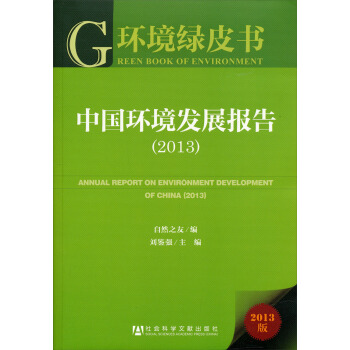![逾渗(第2版)(英文版) [Percolation]](https://pic.qciss.net/11110549/rBEHaVCN4t8IAAAAAAB-U3lHhVIAAChSwOkDUMAAH5r417.jpg)

具体描述
内容简介
This book is about the mathematics of percolation theory,with the emphasis upon presenting the shortest rigorous proofs of the main facts.I have made certain sacrifices in order to maximize the accessibility of the theory,and the major one has been to restrict myself almost entirely to the special case of bond percolation on the cubic lattice Zd.Thus there is only little discussion of such processes as continuum,mixed,inhomogeneous,long-range, first-passage,and oriented percolation.Nor have I spent much time or space on the relationship of percolation to statistical physics,infinite particle systems,disordered media,reliability theory,and so on.With the exception of the two final chapters,I have tried to stay reasonably close to core material of the sort which most graduate students in the area might aspire to know.No critical reader will agree entirely with my selection,and physicists may sometimes feel that my intuition is crooked.内页插图
目录
1 What is Percolation?1.1 Modelling a Random Medium
1.2 Why Percolation?
1.3 Bond Percolation
1.4 The Critical Phenomenon
1.5 The Main Questions
1.6 Site Percolation
1.7 Notes
2 Some Basic Techniques
2.1 Increasing Events
2.2 The FKG Inequality
2.3 The BK Inequality
2.4 Russo's Formula
2.5 Inequalities of Reliability Theory
2.6 Another Inequality
2.7 Notes
3 Critical Probabilities
3.1 Equalities and Inequalities
3.2 Strict Inequalities
3.3 Enhancements
3.4 Bond and Site Critical Probabilities
3.5 Notes
4 The Number of Open Clusters per Vertex
4.1 Definition
4.2 Lattice Animals and Large Deviations
4.3 Differentiability of K
4.4 Notes
5 Exponential Decay
5.1 Mean Cluster Size
5.2 Exponential Decay of the Radius Distribution beneath Pe
5.3 Using Differential Inequalities
5.4 Notes
6 The Subcritical Phase
6.1 The Radius of an Open Cluster
6.2 Connectivity Functions and Correlation Length
6.3 Exponential Decay of the Cluster Size Distribution
6.4 Analyticity of K and X
6.5 Notes
7 Dynamic and Static Renormalization
7.1 Percolation in Slabs
7.2 Percolation of Blocks
7.3 Percolation in Half-Spaces
7.4 Static Renormalization
7.5 Notes
8 The Supercritical Phase
8.1 Introduction
8.2 Uniqueness of the Infinite Open Cluster
8.3 Continuity of the Percolation Probability
8.4 The Radius of a Finite Open Cluster
8.5 Truncated Connectivity Functions and Correlation Length
8.6 Sub-Exponential Decay of the Cluster Size Distribution
8.7 Differentiability of
8.8 Geometry of the Infinite Open Cluster
8.9 Notes
9 Near the Critical Point: Scaling Theory
9.1 Power Laws and Critical Exponents
9.2 Scaling Theory
9.3 Renormalization
9.4 The Incipient Infinite Cluster
9.5 Notes
10 Near the Critical Point:Rigorous Results
10.1 Percolation on a Tree
10.2 Inequalities for Critical Exponents
10.3 Mean Field Theory
10.4 Notes
11 Bond Percolation in Two Dimensions
12 Extensions of Percolation
13 Pereolative Systems
Appendix Ⅰ The Infinite-Volume Limit for Percolation
Appendix Ⅱ The Subadditive Inequality
List of Notation
References
Index of Names
Subject Index
前言/序言
用户评价
一直对《逾渗(第2版)(英文版) [Percolation]》这本书的出版翘首以盼,自从得知其第二版的消息以来,便迫不及待地想深入其中一探究竟。这本书的英文原名“Percolation”本身就蕴含着一种引人入胜的物理现象,它不仅仅是学科内的术语,更是一种关于连接、蔓延和阈值效应的直观隐喻。在我个人的学术背景中,虽然不是直接研究逾渗理论的专家,但其思想的触角却延伸到了许多领域,例如材料科学中的相变,生物学中的疾病传播模型,甚至到网络科学中的信息扩散。因此,一本专门深入探讨这一主题的书籍,无疑为我提供了一个系统梳理和深化理解的绝佳机会。我尤其期待书中能够呈现出最新的研究进展和前沿应用,比如在复杂网络、高维空间逾渗、以及与机器学习的交叉领域等方面,希望能看到更具启发性的论述和案例分析。毕竟,理论的生命力在于其不断发展的应用,而“Percolation”作为一个基础而强大的框架,其潜在的应用场景似乎是无限的。同时,我也希望这本书在保持学术严谨性的前提下,能够以清晰易懂的方式来阐释复杂的概念,让非本领域的研究者也能从中受益,激发新的研究思路。
评分作为一名对复杂系统理论充满好奇的读者,《逾渗(第2版)(英文版) [Percolation]》这本书吸引我的地方在于其核心概念——逾渗。这个词语,本身就暗示着一种动态的、渐进的过程,就像水流穿过土壤一样,从微观的个体连接逐步演化成宏观的集体行为。我一直对如何用数学模型来描述这种从局部到整体的转变感到着迷,而逾渗理论恰恰提供了这样一个强大的框架。对于第二版的出版,我尤为期待的是它是否在第一版的基础上,引入了更多关于数值计算和蒙特卡洛模拟的先进技术。毕竟,在处理许多复杂的逾渗模型时,解析解往往难以获得,而数值方法则成为了探索其行为的重要途径。此外,如果书中能够涵盖一些关于“网络逾渗”或“动态逾渗”的新兴领域,那就更好了,因为这些方向在当下关于信息传播、社会网络动力学等研究中显得尤为重要。我希望这本书能以严谨但不失趣味的方式,引导我走进逾渗世界的深处。
评分《逾渗(第2版)(英文版) [Percolation]》这本书的书名,初次听到便觉得充满了学术深度和研究价值。我个人对随机过程及其在自然和社会现象中的应用一直有着浓厚的兴趣,而逾渗理论正是连接这两者的重要桥梁。特别是其在描述阈值行为和相变现象上的独到之处,让我对其在理解各种复杂系统时扮演的角色充满好奇。我特别希望这本书能够系统地梳理逾渗理论的发展历程,从最初的二维格点逾渗模型,逐步过渡到更复杂的三维、高维甚至连续介质中的逾渗现象。对于第二版,我更期待的是其中能够包含一些近些年来的重要突破,例如在动力学逾渗、多重逾渗、以及与机器学习算法相结合的最新研究进展。我也希望这本书的作者们能够提供清晰的数学推导过程,并配以直观的图示和例子,以便我能够更好地理解这些抽象的概念,并能将其运用于我自己的研究领域,比如在材料设计、生态系统建模或城市规划等方面,探索逾渗理论的潜在应用价值。
评分《逾渗(第2版)(英文版) [Percolation]》这本书,其英文原名“Percolation”就如同其内容一样,有一种“渗透”到各学科的魔力。我注意到这本书的第二版,这本身就说明了其内容的重要性以及作者们在原有基础上进行了充分的更新和拓展,这对于一个希望跟上时代步伐的读者来说,无疑是个好消息。我对逾渗理论的兴趣主要源于其在描述相变和随机系统方面的强大能力。想象一下,在一个由无数随机点组成的网络中,当连接的概率达到某个阈值时,会突然出现一个巨大的连通簇,这其中的数学奥秘和物理意义都非常令人着迷。我特别希望这本书能够清晰地阐述逾渗模型的数学基础,例如格点模型、随机图模型等,并且详细介绍一些关键的数学工具,如概率论、统计物理中的方法。同时,我也期待书中能有关于二维和高维逾渗的对比分析,以及在真实世界中的各种应用实例,比如在通信网络中的拥塞问题,或者在材料科学中对多孔介质的研究。
评分在我看来,《逾渗(第2版)(英文版) [Percolation]》这本书的书名本身就充满了神秘感和吸引力。它不像一些科学书籍那样直白,而是带有一种哲学意味的联想。逾渗,这个词语让我想起水滴渗透入土壤,或者墨水在宣纸上晕开的景象,这种“从无到有”或“从局部到整体”的转变过程,总能激发我对系统行为和临界现象的深层思考。我之所以特别关注这本书的第二版,是因为我对第一版中提到的某些概念,如“临界点”和“标度律”,留下了深刻的印象,但总觉得意犹未尽,渴望了解更多关于这些概念的精确数学描述和其在更广泛场景下的应用。这本书的英文版也意味着我能直接接触到最原汁原味的学术表达,这一点对于我理解其精髓至关重要。我期待书中能够更深入地探讨不同维度、不同形状的逾渗模型,以及它们各自的特性和行为差异。此外,如果能有关于数值模拟方法和实验验证的章节,那将是锦上添花,能够帮助我将理论知识与实际观测联系起来,形成更全面的认知。
评分帮别人买得,还没来得及看,说是不错。
评分逾渗理论是处理强无序和具有随机几何结构系统常用的理论方法之一。这一理论的研究中心内容是:当系统的成分或某种意义上的密度变化达到一定值(称为逾渗阈值)时,在逾渗阈值处系统的一些物理性质会发生尖锐的变化,即在逾渗阈值处,系统的一些物理现象的连续性会消失(而从另一方面看,则是突然出现)。 逾渗转变,指的是在庞大无序系统中随着联结程度,或某种密度、占据数、浓度的增加(或减少)到一定程度,系统内突然出现(或消失)某种长程联结性,性质发生突变,我们称发生了逾渗转变,或者说发生了尖锐的相变。正是这种逾渗转变,使之成为描述多种不同现象的一个自然模型,用于阐明相变和临界现象的一些最重要的物理概念,其中许多概念对非晶态固体(高分子材料是典型的一种)是十分有用的。逾渗理论的重要实际意义,在于它可广泛应用于说明众多物理、化学、生物及社会现象,迄今其应用范围还在不断扩大。表5-1列举了十五种不同的现象,都是已采用逾渗模型加以分析的。
评分帮别人买得,还没来得及看,说是不错。
评分帮别人买得,还没来得及看,说是不错。
评分不错不错不错不错不错不错不错不错不错不错不错不错不错不错不错不错
评分给别人买的,他说还行吧
评分表1中约一半属宏观现象,一半属微观过程。宏观和微观的分界线在表的中间。这儿特意把两种极端情形并列以便于区别,请注意不同例子的特征长度相差可达1035。银河系的特征尺度量级为1022cm,而核子的尺度量级为10-13cm,用以说明逾渗理论广阔的适用范围。
评分表1中约一半属宏观现象,一半属微观过程。宏观和微观的分界线在表的中间。这儿特意把两种极端情形并列以便于区别,请注意不同例子的特征长度相差可达1035。银河系的特征尺度量级为1022cm,而核子的尺度量级为10-13cm,用以说明逾渗理论广阔的适用范围。
评分表1中约一半属宏观现象,一半属微观过程。宏观和微观的分界线在表的中间。这儿特意把两种极端情形并列以便于区别,请注意不同例子的特征长度相差可达1035。银河系的特征尺度量级为1022cm,而核子的尺度量级为10-13cm,用以说明逾渗理论广阔的适用范围。
相关图书
本站所有内容均为互联网搜索引擎提供的公开搜索信息,本站不存储任何数据与内容,任何内容与数据均与本站无关,如有需要请联系相关搜索引擎包括但不限于百度,google,bing,sogou 等
© 2025 book.cndgn.com All Rights Reserved. 新城书站 版权所有












![Springer手册精选系列·晶体生长手册(第4册):蒸发及外延法晶体生长技术(影印版) [Springer Handbook Crystal Growth] pdf epub mobi 电子书 下载](https://pic.qciss.net/11179563/rBEQWFE0c8oIAAAAAAc_K8jVIaIAABcEgFg6LsABz9D903.jpg)







![生态文明建设概论 [Toward an Ecological Civilization] pdf epub mobi 电子书 下载](https://pic.qciss.net/11256785/rBEhUlHLzyUIAAAAAAKMjEE99rEAAAkGAM-DU4AAoyk624.jpg)